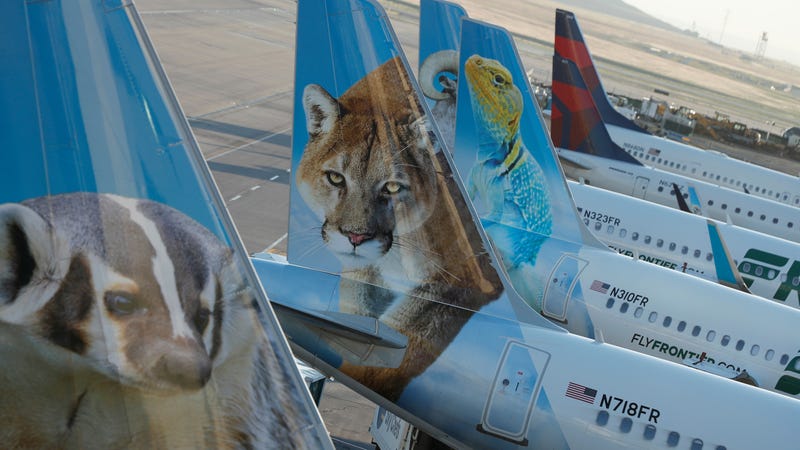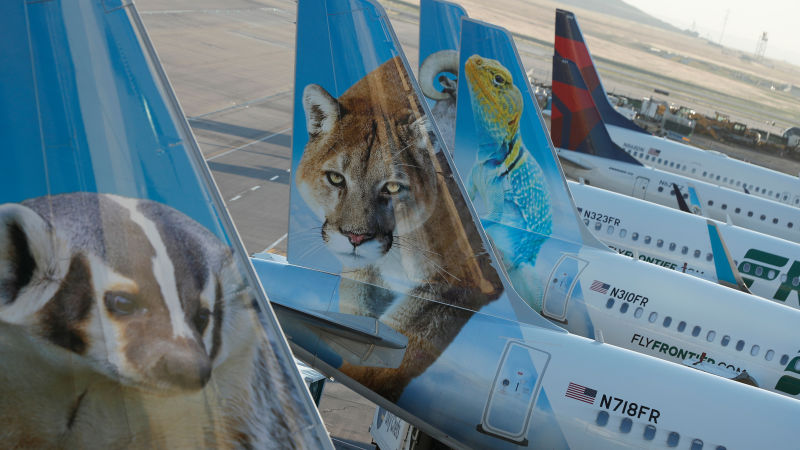
Reinforcing once again that there is a trade-off between comfort and responsibility, the most fuel-efficient airlines are also the ones that cram the most passengers onto their planes, according to a new study.
Frontier is the most fuel-efficient domestic U.S. airline, according to the International Council On Clean Transportation, and by a decent margin, too. Spirit and Southwest are seven percent less fuel efficient than Frontier, but still better than the industry average.
The country’s largest carriers don’t fare too well on the fuel efficiency metric. United is the only major carrier above industry average, while Delta and American are 15 percent less fuel efficient than Frontier. Pulling up the rear is JetBlue, a full 26 percent less fuel efficient than Frontier.
But this is not to say flying Frontier is the responsible choice for the environment. Flying, any flying, is very bad for the environment. One passenger’s share of CO2 emissions on a round-trip flight from New York to London is roughly one ton, or “more than the average annual per capita emissions in fifty-six of the world’s countries,” according to The Guardian (the global average is about five tons, and in the good ol’ U.S. of A., the average annual per capita emissions is 16.5 tons).
Advertisement
Nobody has any good answers on what to do about this except to fly less. But it is the year 2019, and we, as a society, have thus far not conceded to making drastic lifestyle changes to reduce our carbon emissions.
So, short of choosing not to fly, one can instead choose to fly on more fuel-efficient airplanes. Unfortunately, flight booking services and airline websites do not tell customers the fuel efficiency of the airplane for any given flight. So, without a detailed knowledge of aircraft models, we’re left to generalize based on the airline as a whole.
Advertisement
But there is more to it than simply the aircraft type. In that vein, JetBlue performs so poorly because it uses mostly older and fuel-thirstier planes, but also because it has among the lowest seating density. Meanwhile, the four most fuel-efficient airlines (Frontier, Spirit, Southwest, and Sun Country) are all low-cost or ultra-low-cost carriers without premium cabins cramming folks in as tightly as possible.
But the real bad news is, even though fuel efficiency of U.S. airlines have increased three percent from 2016 to 2018, according to the study, CO2 emissions from those same airlines have outpaced those improvements:
The net result was a 7% increase in overall fuel burn and CO2emissions from U.S. domestic operations. Fuel use from domestic operations by U.S. passenger carriers hit 12.5 billion gallons in 2018, a 17% increase since the 2009 minimum during the global financial crisis and above 2005 levels.
Advertisement
In other words, airlines are using more fuel from more flights even though the individual planes are, on average, more efficient. As the study’s authors put it:
CO2 emissions from U.S. domestic operations have increased by 15% over the past five years, raising questions about how the U.S. aviation industry can meet its goal of carbon neutral growth from 2020 without further policy interventions
Advertisement
In other words, there are no good answers except to fly less.















